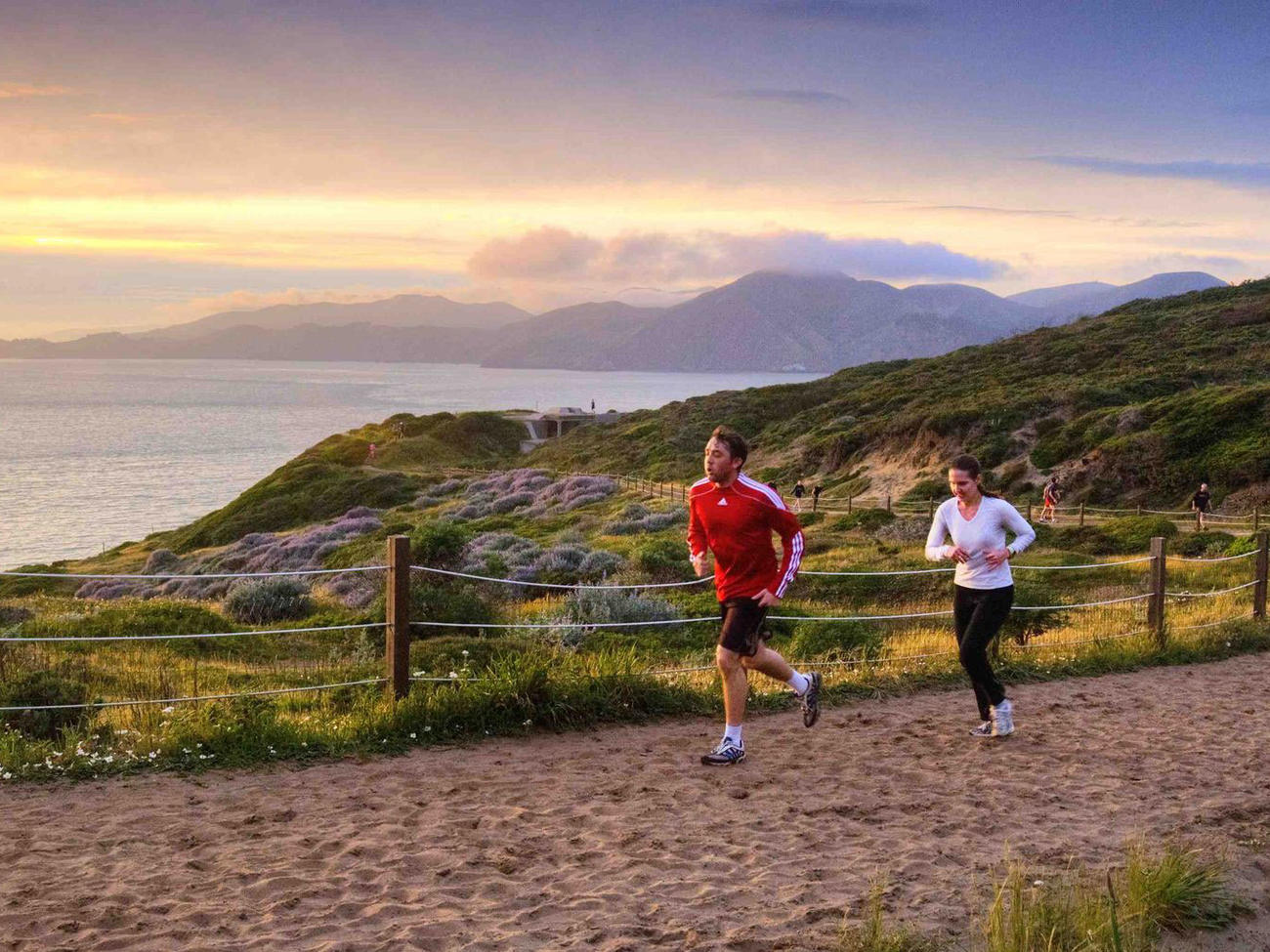
Golden Gate National Recreation Area 101

What are the most popular national parks in the West? Yosemite, you might say. Yellowstone. The Grand Canyon. You probably wouldn’t even think of the Golden Gate National Recreation Area, but 13 million visitors a year prove otherwise. Many of the Bay Area’s best-known attractions are actually part of (or administered by) the GGNRA: Alcatraz, Crissy Field, Ocean Beach, the Marin Headlands, Fort Point, Muir Woods, even the Cliff House. Which means many of those 13 million visitors may have had no idea that they were, in fact, in a national park.
About the park: In 1972, President Richard Nixon signed the bill creating the Golden Gate National Recreation Area; it was an end run around the rule that a National Park (that is, with a capital N and P) had to be composed of contiguous land. The first two acquisitions for this new Park Service invention were Alcatraz Island and Fort Mason, both bought from the U.S. Army. Nearly fifty years later, the GGNRA encompasses 80,000 acres spread out over three counties and containing more than 700 historic structures, all purchased or donated bit by bit over the intervening decades. (The most recent addition: the 4,000 rolling, wooded acres of Rancho Corral del Tierra, in Pacifica.) Among the landmarks to be found within the GGNRA’s borders: the ridge from which the Portola Expedition first saw the San Francisco Bay in 1769, the first European settlement in what was to become San Francisco, the embarkation point for hundreds of thousands of soldiers fighting in multiple wars, the cell in which Al Capone spent his final days.
Getting there: One convenient peculiarity of the GGNRA is that visiting the park is, basically, equivalent to visiting San Francisco, with a few side trips to Marin and the Peninsula thrown in. You can even explore much of the GGNRA using public transit. Only two units of the GGNRA impose an entrance fee: Muir Woods ($7/adult) and Alcatraz ($30/adult), and at the latter, it’s really the ferry and audio tour that you’re paying for.
When to go: Like San Francisco, the GGNRA is a year-round destination. And like San Francisco, the GGNRA can be foggy and chilly in summer—if you don’t bring a jacket or fleece, you’ll no doubt end up buying one. In winter, occasional rain storms pass through, but days can also be sunny and clear. Spring and fall will be the warmest times to visit, though even then, temperatures in the city rarely rise above 80 degrees. (Down in the Peninsula, they can reach into the 90s in summer, though the GGNRA units there do tend to be coastal, and thus cooler. The same goes for the Marin units.
Play: Knockout views. Appealing mix of people. Good coffee. Crissy Field at Golden Gate National Recreation Area gives you everything you love about San Francisco in one scenic package. A historic Army airfield transformed into a native plant-lined beach oasis, Crissy draws dog walkers, joggers with strollers, kitesurfers, picnickers, cyclists, fishermen, and 8-year-olds letting the cool bay water lap their toes. All this and the Golden Gate Bridge looming gracefully. nps.gov/goga
Eat: Snack on lattes and baked goods while browsing books at the Warming Hut (415/561-3040) cafe.
First-time essentials: The marquee attractions are, of course, Alcatraz, the Presidio and Crissy Field, Cliff House, and Muir Woods. The Marin Headlands, though, shouldn’t be missed.
Beat the crowds: Get beyond Hawk Hill and Fort Baker, and you’ll have much of the Headlands to yourself, especially on a weekday. And the Peninsula properties—Milagra Ridge, Sweeney Ridge, and the Phleger Estate—see only a tiny fraction of the crowds that swarm Muir Woods and Alcatraz. And remember, GGNRA units often share borders (and trails) with state parks and county parks and other public lands.
Visitor centers: At the following sites, you’ll find rangers on duty and stores selling books, maps, and, of course, gifts (and fleeces!): Fort Point Bookstore, Lands End Lookout Visitor Center, Marin Headlands Visitor Center, Muir Woods Visitor Center, The Presidio Visitor Center. In addition, the Roving Ranger—a zippy green-and-orange former bread truck—travels to GGNRA areas that don’t have visitor centers, like Mori Point in Pacifica or Tennessee Valley in Marin, and doles out maps, brochures, and ranger advice from a walk-up window. The truck is an initiative of the Golden Gate National Parks Conservancy, the GGNRA’s extremely energetic nonprofit partner; the Conservancy also happens to operate the new(ish) Golden Gate Bridge Pavilion, which has been a vast improvement over the rather down-market gift shop that used to occupy the Roundhouse across the plaza, as well as many of the other visitor centers and bookstores in the GGNRA (such as the Warming Hut at Crissy Field, and the Lands End Lookout).
For more information:
National Park Service: nps.gov/goga, nps.gov/alca, nps.gov/fopo, nps.gov/muwo, nps.gov/prsf
Golden Gate National Parks Conservancy: parksconservancy.org
San Francisco Bay Area public-transit trip planner: transit.511.org
